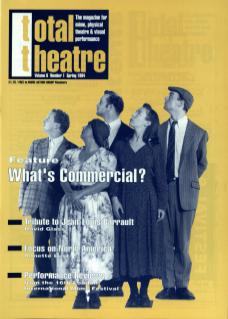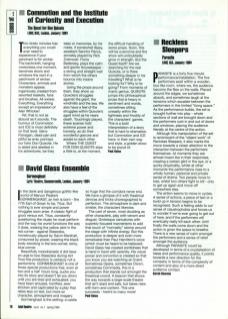This ninety minutes has everything you could ever need to experience if your penchant is for wicker. The backcloth, hanging motionless one moment, becomes doors and windows the next in a patchwork of wicker. Characters, animals and monsters appear, ingeniously created from assorted baskets, fans and brushes. All wicker. Everything. Everything except an impression of Alan Whicker!
Yet, that is not as absurd as it sounds. The humour of Commotion and ICE is most definitely on that level. Gerry Flanagan, deadpan and pitiful as ever, portrays our hero Don Quixote. He is aided and abetted in his adventures, be they tales or memories, by his noble, if somewhat dippy, assistant Sancho Panza, amiably played by Rick Zoltowski. Fiona Battersby plays the calm and gentle Housekeeper – a strong and straight wall from which the others bounce into insane stories.
Using the props around them, they show us Quixote's struggles against the giant, the windmills and the sea. We also have a feel of the struggles within Quixote's aged mind as he nears death. Touchingly played, these scenes hold extreme power and honesty, as do their wonderful glances and asides to each other.
Where The Quest for Don Quixote slips a little is, at the moment, the difficult handling of some props. Soon, this will be overcome and the show will undoubtedly grow in strength. But the Quest itself? Are we searching for the real Quixote, or is there something deeper in his travelling? What is he looking for? Why is he going? From moments of manic genius, Quixote jumps into philosophical prose that is heavy in sentiment and words, sometimes sitting uneasily within the lightness and frivolity of the characters' games. This is a bold interpretation of a story that is hard to dramatise, but Commotion and ICE have, in their own way and style, a golden show to be proud of.

